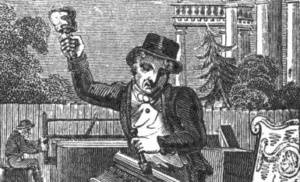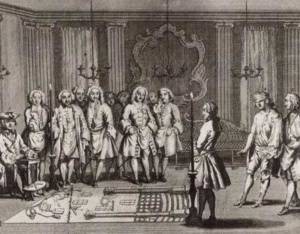 Freemasonry has a long tradition in Europe, especially in England. The beginnings of the story as well as the ritual and symbols of Freemasonry go back to the stone masonry and their huts. The name “Freemason” is probably derived from the name of the stone sculptor or the builder of the huts, the freestone masons. Unlike them, the rough stone masons were more responsible for the grosser works.
Freemasonry has a long tradition in Europe, especially in England. The beginnings of the story as well as the ritual and symbols of Freemasonry go back to the stone masonry and their huts. The name “Freemason” is probably derived from the name of the stone sculptor or the builder of the huts, the freestone masons. Unlike them, the rough stone masons were more responsible for the grosser works.
The term Freemason is found for the first time in documents of the cathedral of Exeter from the year 1396. In 1495 it is found in the imperial statutes of King Henry VII. 1537 calls the guild in London its members Freemasons.
The name “Lodge” for the places as well as the organizations of the Masonic gatherings comes from the English word “Lodge” (as designation for the huts). The term lodge is already mentioned in 1278 in a document on the construction of the Vale Royal Abbey.
However, between the 16th and 17th centuries, when the time of the great ecclesiastical buildings came to an end, the lodges increasingly began to include “non-masons”, that is, no Masons in the original, craftsmanship meaning. These were also noble patrons and scientists. This was the transition to the more esoteric, morally and strongly symbolic “speculative masonry”. In 1723, the “Anderson Constitutions” were published, in which this change in meaning was documented. Even today, these “old duties” are officially and bindingly regarded as the spiritual – moral basis of Freemasonry. They include, for example, the belief in a higher being and precise rules on the behavior of the brother inside and outside the lodges, and they call for moral conduct, respect for the authorities and obedience to the laws of the state in which one lives .
 Presumably in 1717, five English lodges joined together to form the first superordinate “Grand Lodge”, and from the 1730s Freemasonry began to spread rapidly across continental Europe. Similar to other forms of socialization during the Enlightenment, the main carriers of the movement were to be found above all in the newly formed or newly-understood bourgeoisie, which increasingly wanted to emancipate themselves from the principles of the still prevalent socialist societies. However, in the lodges that arose everywhere, even more enlightened nobles and monarchs such as Frederick II of Prussia became members.
Presumably in 1717, five English lodges joined together to form the first superordinate “Grand Lodge”, and from the 1730s Freemasonry began to spread rapidly across continental Europe. Similar to other forms of socialization during the Enlightenment, the main carriers of the movement were to be found above all in the newly formed or newly-understood bourgeoisie, which increasingly wanted to emancipate themselves from the principles of the still prevalent socialist societies. However, in the lodges that arose everywhere, even more enlightened nobles and monarchs such as Frederick II of Prussia became members.
However, in the course of the 18th century there was an increasing debate within and between the lodges about the “right” political and ideological orientation. This was followed by numerous splits and splits of the “brothers” in esoteric-mystical to radical-political directions (such as the “Illuminati”, which today is always referred to by Masons as pseudo-Masonic unification) and differentiations of forms and rituals.
In 1782, an international Masonic congress in Wilhelmsbad near Hanau attempted to find a reuniting reorganization and to end increasingly hierarchizing tendencies (the introduction of so-called “highs”) within the lodges, which actually understood themselves as groups of equals. There were three main groups in the Freemasonry: the hermetically-alchemically oriented currents, the mystical-spiritualist-martinist from France and the rationalists and enlighteners. The Freemasons finally agreed with the founding of the so-called “Eclectic League” on a three-level hierarchy (“apprentice”, “journeyman” and “master degree”) and the adoption of a Christian-theosophical-martinist system.